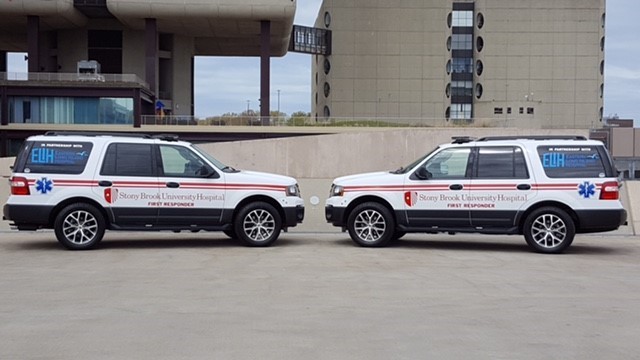
The Town Board is poised to approve an agreement for paid paramedics to augment the Island’s all-volunteer Emergency Medical Services squad. Employed by Stony Brook University Hospital, one paramedic would serve 12 hours daily all year long, from 8 AM to 8 PM.
Shelter Island Police Det/Sgt Jack H. Thilberg, who also serves as the Town’s EMS director, reported to the Town Board at its Tuesday work session. He said Town Attorney Stephen F. Kiely was working out final details and expected to have a resolution ready for Town Board approval at its business meeting on Friday.
On behalf of the Town’s 35-member EMS squad, Thilberg will have a say in hiring the new personnel. It’ll take more than one person to provide the services, and Thilberg said he expected one full-time paramedic would be supported by a rotating roster of two or three others.
The Town Board approved a budget line of $132,000 to cover anticipated costs for hiring paramedics. But during budget discussions last October, Thilberg warned of a risk that Shelter Island EMS could have trouble reliably hiring individual paramedics, given the strong demand for their services.
The East End is a competitive market, Thilberg said, where many of the all-volunteer services have encountered difficulties retaining local paramedics due to the rigors of training and the high value of their specialized work. The Island’s only volunteer paramedic, Phil Power, retired last year. For many years, we had a volunteer paramedic — Ben Jones — who was believed to be among the oldest active paramedics in the country. He served until about a year before he died at age 93 in 2016.
Most of Shelter Island’s EMS squad are EMTs or are in training to become EMTs. They respond to calls for aid, and, guided by Stony Brook’s emergency medical control services, transport patients to nearby hospitals — Stony Brook’s Eastern Long Island Hospital in Greenport, Stony Brook Southampton Hospital — or, in special cases, to Peconic Bay Medical Center in Riverhead.
As needed, Island EMS crews transport aided cases to the Island’s airfields for transport by Suffolk County PD medevac helicopter to Stony Brook University Hospital.
What’s the difference between EMTs and paramedics?
According to state health department protocols, EMTs conduct basic, non-invasive interventions to help save lives and reduce harm at emergency sites. In addition, they have the skills needed to transport patients safely. In many places, EMTs provide out-of-hospital care.
To be licensed as an EMT, you must take an accredited course. EMTs courses usually take between 150 and 180 hours to complete. EMTs learn how to:
- Perform Cardiopulmonary resuscitation (CPR)
- Administer oxygen
- Administer glucose to diabetic patients
- Help people who are having asthma attacks or allergic reactions
- Remove patients and prepare them for transport to the hospital
Paramedics are the most skilled emergency responders. To become a certified paramedic, you must complete a nationally accredited paramedic program at the certificate or associate’s degree level.
Paramedic classes take longer, between 1,200 and 1,800 hours to complete. Often, they are offered at a college and allow a student to obtain an Associate’s degree if they choose.
Paramedics learn how to:
- Administer medications
- Start intravenous (IV) lines
- Provide advanced airway management for patients
- Resuscitate patients
- Help people who have suffered trauma
There are Advanced Emergency Medical Technicians and Critical Care Technicians between the two levels.
How will the Stony Brook partnership work?
Under the proposed agreement, the Town will provide funds to the Stony Brook Southampton Hospital Foundation. The foundation, in turn, will deliver the money in a grant to Stony Brook University Hospital, which will pay the remainder of the costs. Thilberg excepts the total annual bill to be about $235,000.
What’s more, the paramedics will arrive daily aboard what’s known as a “fly-car” or first responder vehicle. Stony Brook already employs two of these non-transport vehicles on the North Fork to support volunteer agencies.
Such vehicles are typically equipped with state-of-the-art diagnostic and treatment tools, Thilberg said. Having a separate car enables the paramedic on duty to focus on cases that require highly-specialized training.
While Stony Brook will pay for gas, the Town EMS had to take on ferriage. Thilberg said the ferries have agreed to discounted fares for the fly-car and paramedic.
In addition to responding to calls, Thilberg has said the paramedic on duty would also assist with training and some day-to-day EMS operations, such as ensuring that ambulances are appropriately stocked.




